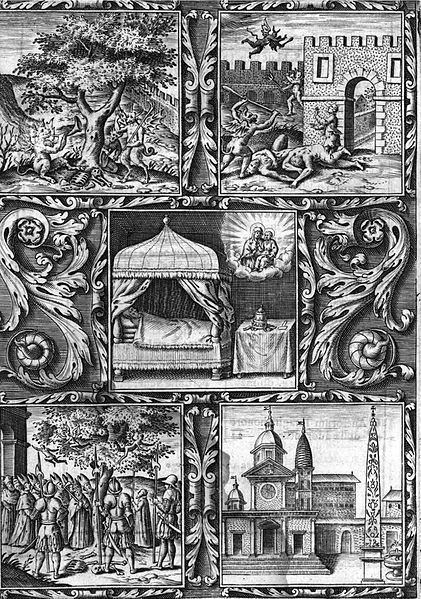Piazza del Popolo is a large urban square in Rome. The name in modern Italian literally means "People's Square", but historically it derives from the poplars after which the church of Santa Maria del Popolo, in the northeast corner of the piazza, takes its name.
The Piazza del Popolo.
An Egyptian obelisk of Ramesses II from Heliopolis stands in the centre of the Piazza.
The entrance of the Tridente from Piazza del Popolo, defined by the "twin" churches of Santa Maria in Montesanto (left, built 1662–75) and Santa Maria dei Miracoli (right, built 1675–79). The Via del Corso exits between the two churches.
Porta del Popolo
The Parish Basilica of Santa Maria del Popolo is a titular church and a minor basilica in Rome run by the Augustinian order. It stands on the north side of Piazza del Popolo, one of the most famous squares in the city. The church is hemmed in between the Pincian Hill and Porta del Popolo, one of the gates in the Aurelian Wall as well as the starting point of Via Flaminia, the most important route from the north. Its location made the basilica the first church for the majority of travellers entering the city. The church contains works by several famous artists, such as Raphael, Gian Lorenzo Bernini, Caravaggio, Alessandro Algardi, Pinturicchio, Andrea Bregno, Guillaume de Marcillat and Donato Bramante.
The church from Piazza del Popolo
The foundation legend of the church, in an engraving from Giacomo Alberici's book (1599)
Pope Paschal II
The icon of Madonna del Popolo







